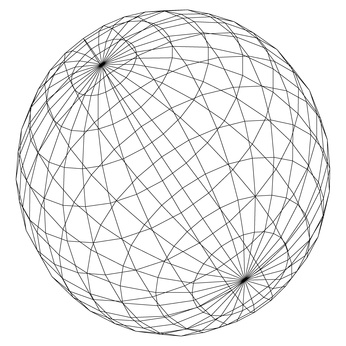The science of Geomorphology is largely a twentieth century discipline, so the real Earth Science Tradition comes from Eratosthenes a Greek Scientist, resident of Alexandria (an Egyptian port) and director of it’s great library in the third century B.C. He discovered that a stick placed in the ground at Alexandria during the summer solstice casts a shadow while on place in the ground at Syene (in southern Egypt) at the same time casts no shadow at all. Eratosthenes reasoned that because they occur at the same time the earth must be round. He hired some one to calculate the distance from Alexandria to Syene and found it to be about 800 kilometers. (not the real units used at the time) He knew the angle of the shadow at Alexandria to be seven degrees. He therefore reasoned that 800 kilometers is therefore one fiftieth of the circumference of the earth(7degrees over 360 degrees). Therefore the earth had to be about 40 000 kilometers in circumference (Sagan C. Cosmos p 6,7 New York 1980).
The great discovery of Eratosthenes allowed many sailors after his time to determine their latitude but not their longitude anywhere in the world. Though Eratosthenes with his ability to measure the exact size of the earth was a great beginning in what Pattison would call the Earth Science Tradition because of it’s association between the earth and the sun. It was much an aid to the spatial tradition of Ptolemy in the second century A.D. who used distances of the earth’s surface as well as sailing records of coastlines to form his great map Geographia which included longitude and latitude lines. It was all the known world at the time. The maps of the middle ages were much more inaccurate because the Europeans lost the geography of the Greeks, This geographical ability of the Europeans was reborn in the 17th century and became a much highly refined subject by the 19th century (Fellman/Getis p 2).
